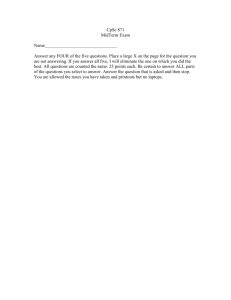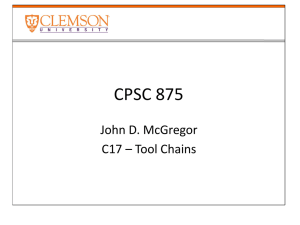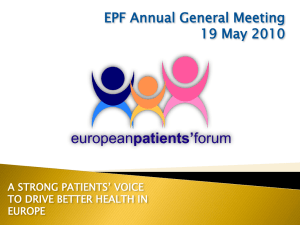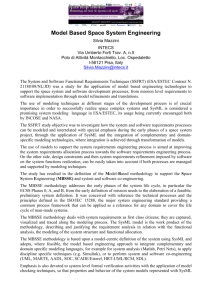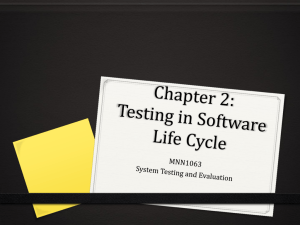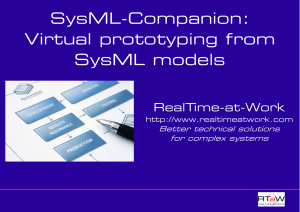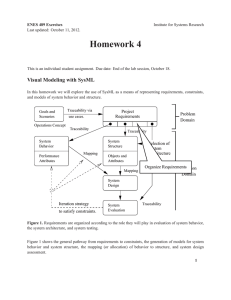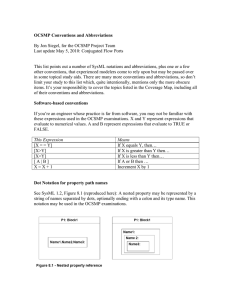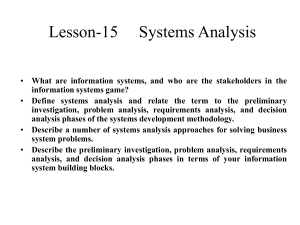SYSE 802
advertisement
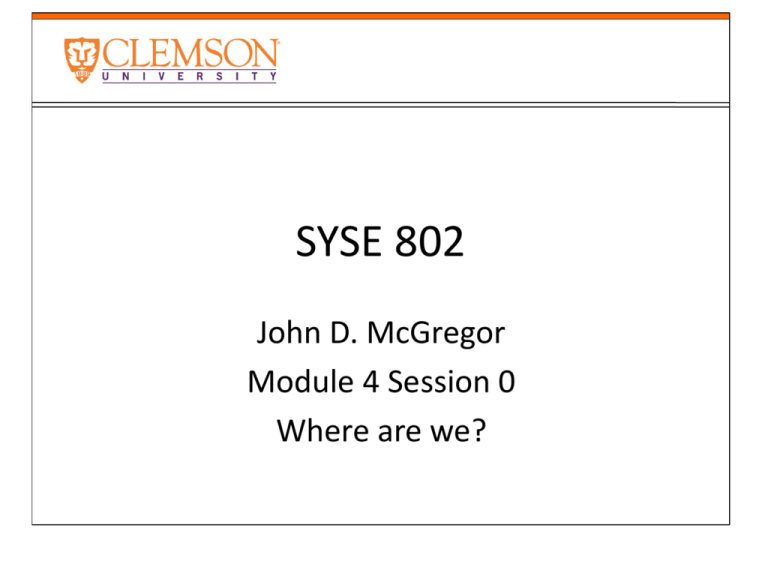
SYSE 802 John D. McGregor Module 4 Session 0 Where are we? V model • I was asked about how what we are doing compares to the traditional V Model process of systems engineering. I was confused since we are explicitly following that model til I followed the reference I was given to page 10 of the Buede book. • That V model is only the design and integration portions of the full V model shown on page 6. V Model - 2 • Two responses: – Waiting until the upward bound leg of the V model to do verification and validation is too late. You have already wasted work on incorrect requirements. Taking the model-driven approach that we are is much more likely to find defects earlier but does not negate the overall V. – Second response, we are following a V-Model. The standard given in ISO 15288 is shown first… V Model from ISO 15288 – Systems Engineering Module 0 Module 1,2 Module 3,4 Module 5 V model -3 • This picture is the high level V Model used by the US Dept of Transportation Module 0 Module 1,2 Module 3,4 Module 5 http://en.wikipedia.org/wiki/V-Model MIT’s V Model for Systems Engineering Module 0 Module 1,2 Module 3,4 Module 5 Tools • The EPF tool is equivalent to IBM’s Composer tool. A large number of companies, in order to meet multiple demands, blend ISO 9000, CMMI, and a variety of other criteria. They build a unique method for each project to include tools, techniques, and processes. • EPF, Composer, and other similar tools give the ability to take the V model and develop explicit process definitions for each project. Tools - 2 • Topcased including SysML and AADL support a model-driven approach to systems engineering. After a very large (billions of dollars) mistake Airbus vowed not to make that mistake again and began development of an environment for end-to-end systems engineering including hardware and software. They have selected specific standards such as SysML and AADL to build dependable systems. More questions? • Keep the questions coming
